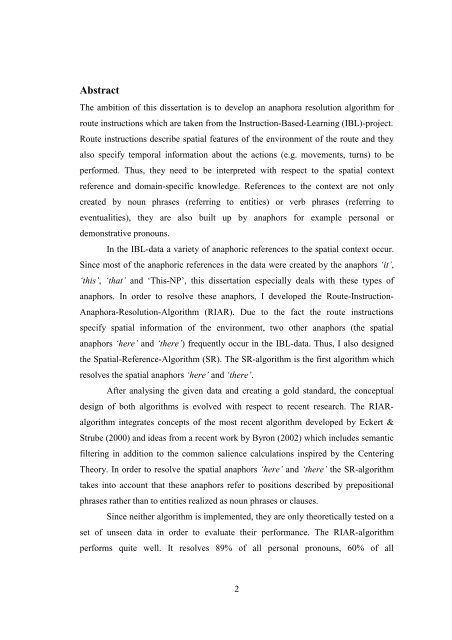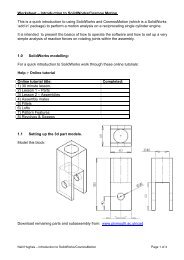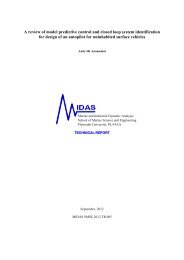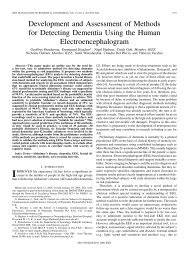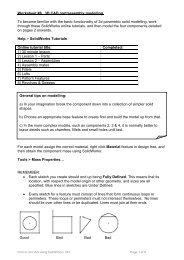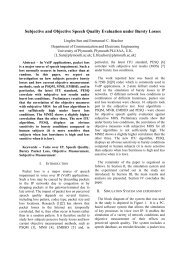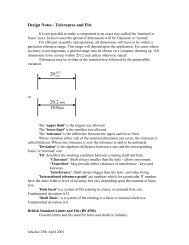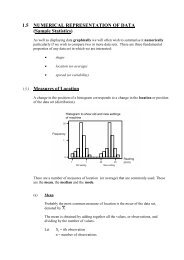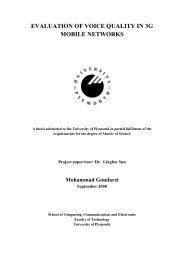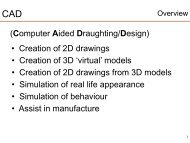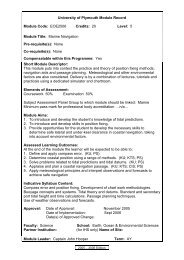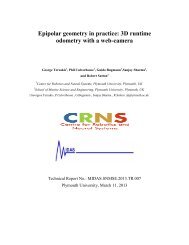Designing an Anaphora Resolution Algorithm for Route Instructions
Designing an Anaphora Resolution Algorithm for Route Instructions
Designing an Anaphora Resolution Algorithm for Route Instructions
You also want an ePaper? Increase the reach of your titles
YUMPU automatically turns print PDFs into web optimized ePapers that Google loves.
Abstract<br />
The ambition of this dissertation is to develop <strong>an</strong> <strong>an</strong>aphora resolution algorithm <strong>for</strong><br />
route instructions which are taken from the Instruction-Based-Learning (IBL)-project.<br />
<strong>Route</strong> instructions describe spatial features of the environment of the route <strong>an</strong>d they<br />
also specify temporal in<strong>for</strong>mation about the actions (e.g. movements, turns) to be<br />
per<strong>for</strong>med. Thus, they need to be interpreted with respect to the spatial context<br />
reference <strong>an</strong>d domain-specific knowledge. References to the context are not only<br />
created by noun phrases (referring to entities) or verb phrases (referring to<br />
eventualities), they are also built up by <strong>an</strong>aphors <strong>for</strong> example personal or<br />
demonstrative pronouns.<br />
In the IBL-data a variety of <strong>an</strong>aphoric references to the spatial context occur.<br />
Since most of the <strong>an</strong>aphoric references in the data were created by the <strong>an</strong>aphors ‘it’,<br />
‘this’, ‘that’ <strong>an</strong>d ‘This-NP’, this dissertation especially deals with these types of<br />
<strong>an</strong>aphors. In order to resolve these <strong>an</strong>aphors, I developed the <strong>Route</strong>-Instruction-<br />
<strong>Anaphora</strong>-<strong>Resolution</strong>-<strong>Algorithm</strong> (RIAR). Due to the fact the route instructions<br />
specify spatial in<strong>for</strong>mation of the environment, two other <strong>an</strong>aphors (the spatial<br />
<strong>an</strong>aphors ‘here’ <strong>an</strong>d ‘there’) frequently occur in the IBL-data. Thus, I also designed<br />
the Spatial-Reference-<strong>Algorithm</strong> (SR). The SR-algorithm is the first algorithm which<br />
resolves the spatial <strong>an</strong>aphors ‘here’ <strong>an</strong>d ‘there’.<br />
After <strong>an</strong>alysing the given data <strong>an</strong>d creating a gold st<strong>an</strong>dard, the conceptual<br />
design of both algorithms is evolved with respect to recent research. The RIARalgorithm<br />
integrates concepts of the most recent algorithm developed by Eckert &<br />
Strube (2000) <strong>an</strong>d ideas from a recent work by Byron (2002) which includes sem<strong>an</strong>tic<br />
filtering in addition to the common salience calculations inspired by the Centering<br />
Theory. In order to resolve the spatial <strong>an</strong>aphors ‘here’ <strong>an</strong>d ‘there’ the SR-algorithm<br />
takes into account that these <strong>an</strong>aphors refer to positions described by prepositional<br />
phrases rather th<strong>an</strong> to entities realized as noun phrases or clauses.<br />
Since neither algorithm is implemented, they are only theoretically tested on a<br />
set of unseen data in order to evaluate their per<strong>for</strong>m<strong>an</strong>ce. The RIAR-algorithm<br />
per<strong>for</strong>ms quite well. It resolves 89% of all personal pronouns, 60% of all<br />
2


